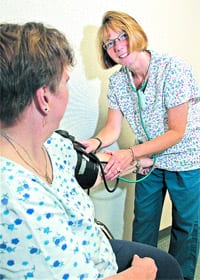Seasonal Affective Disorder Manifests in Many Ways
Seasonal affective disorder (SAD) is a type of depression that is triggered by the seasons of the year. The most common type of SAD is called winter-onset depression. Symptoms usually begin in late fall or early winter and go away by summer. A much less common type of SAD, known as summer-onset depression, usually begins in the late spring or early summer and goes away by winter.SAD may be related to changes in the amount of daylight during different times of the year.
Between 4{06cf2b9696b159f874511d23dbc893eb1ac83014175ed30550cfff22781411e5} and 6{06cf2b9696b159f874511d23dbc893eb1ac83014175ed30550cfff22781411e5} of people in the U.S. suffer from SAD. Another 10{06cf2b9696b159f874511d23dbc893eb1ac83014175ed30550cfff22781411e5} to 20{06cf2b9696b159f874511d23dbc893eb1ac83014175ed30550cfff22781411e5} may experience a mild form of winter-onset SAD. The condition is more common in women than in men. Although some children and teenagers get SAD, it usually doesn’t start in people younger than 20. For adults, the risk of SAD decreases as they get older. Winter-onset SAD is more common in northern regions like New England, where the winter season is typically longer and more harsh.
The most common type of SAD is called winter-onset depression. Symptoms usually begin in late fall or early winter and go away by summer.
What are the Symptoms?
Although symptoms are clues to the diagnosis, not everyone who has seasonal affective disorder experiences the same symptoms. Common symptoms of winter-onset SAD (90{06cf2b9696b159f874511d23dbc893eb1ac83014175ed30550cfff22781411e5} of the people who have SAD) may include the following:
• A change in appetite, especially a craving for sweet or starchy foods;
• Weight gain;
• A drop in energy level;
• Fatigue;
• A tendency to oversleep;
• Difficulty concentrating;
• Irritability and anxiety;
• Increased sensitivity to social rejection;
• Avoidance of social situations and a loss of interest in previously-enjoyed activities;
• Feelings of guilt;
• Feelings of hopelessness; and
• Physical problems, such as headaches. Symptoms of summer-onset SAD (10{06cf2b9696b159f874511d23dbc893eb1ac83014175ed30550cfff22781411e5} of people who have SAD) may include:
• A loss of appetite;
• Weight loss;
• Insomnia;
• Irritability and anxiety; and
• Agitation.
Symptoms of SAD tend to come back year after year. They also usually come and go at about the same time every year. The changes in mood are not necessarily related to obvious things that would make a certain season stressful (such as regularly being unemployed during the winter, for example).
What are the Treatments?
Seasonal affactive disorder can be treated in a number of ways, including light therapy, medicine, or behavior therapy. Your doctor may want to combine therapies if one does not work for you. If you have winter-onset SAD and your doctor suggests you try light therapy, you may use a specially designed light box, or a light visor that you wear on your head like a cap. You will sit in front of the light box or wear the light visor for a certain length of time each day. Generally, light therapy takes about 30 minutes each day throughout the fall and winter, when you’re most likely to be depressed.
Another kind of light therapy involves a ‘dawn simulator,’ which is a light activated by a timer. It is set up in your bedroom to mimic a natural sunrise. The light turns on early in the morning and gradually increases in brightness and allows your body to wake up naturally, without using an alarm. If light therapy helps, you’ll continue it until enough sunlight is available, typically in the springtime. Stopping light therapy too soon can result in a return of symptoms.
When used properly, light therapy seems to have very few side effects. However, some side effects include eyestrain, headache, fatigue, irritability, and inability to sleep (if light therapy is used too late in the day). Light therapy should be used carefully in people who have manic-depressive disorders, skin that is sensitive to sunlight, and/or medical conditions that make their eyes vulnerable to sunlight damage.
Tanning beds should not be used to treat SAD. The light sources in tanning beds are high in ultraviolet (UV) rays, which can harm both your eyes and your skin.
This article first appeared at familydoctor.org, an online outreach of the American Academy of Family Physicians.

